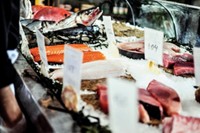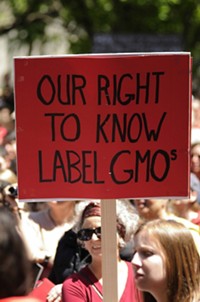Advertisement
Grab your lab coat. Let's get started
Welcome!
Welcome!
Create an account below to get 6 C&EN articles per month, receive newsletters and more - all free.
It seems this is your first time logging in online. Please enter the following information to continue.
As an ACS member you automatically get access to this site. All we need is few more details to create your reading experience.
Not you? Sign in with a different account.
Not you? Sign in with a different account.
ERROR 1
ERROR 1
ERROR 2
ERROR 2
ERROR 2
ERROR 2
ERROR 2
Password and Confirm password must match.
If you have an ACS member number, please enter it here so we can link this account to your membership. (optional)
ERROR 2
ACS values your privacy. By submitting your information, you are gaining access to C&EN and subscribing to our weekly newsletter. We use the information you provide to make your reading experience better, and we will never sell your data to third party members.
Analytical Chemistry
Joining Forces For Food Safety
Instrumentation: Agilent, FDA team up to improve methods for pathogen detection, seafood identification
by Britt E. Erickson
March 26, 2012
| A version of this story appeared in
Volume 90, Issue 13

Instrumentation company Agilent Technologies is partnering with the Food & Drug Administration to develop mass-spectrometry-based methods for identifying subtypes of Salmonella bacteria in food. The joint effort, announced on March 19, also aims to improve Agilent’s DNA-based lab-on-a-chip analyzer for verifying whether seafood is accurately labeled.
When outbreaks of food-borne illness occur, knowing the subtype of the pathogen can help pinpoint the source of the contamination. “Techniques that are used currently for tracking the origin of bacteria during a food-borne outbreak take too long,” says Paul Zavitsanos, head of Agilent’s global food safety program. “There has been a furious effort over the past five years to discover new technologies that will shorten that time frame. This effort is part of that endeavor,” he tells C&EN.
Current methods for identifying Salmonella subtypes take several days. The partnership aims to develop mass-spectrometry-based methods that take less than a day, Zavitsanos says. Mass spectrometry also offers the ability to obtain multiple genotypes at the same time, says Steve Royce, manager of Agilent’s food safety program in North America.
“We expect this collaboration will be an important step in the development of new and specific tools for tracking bacterial pathogens in foods,” Eric W. Brown, director of the Division of Microbiology at FDA’s Center for Food Safety & Applied Nutrition, said in a statement.
Under the agreement, Agilent will also work with both FDA and Campden BRI in England to develop technology to identify fish and seafood species. The goal is to make the Agilent 2100 Bioanalyzer rapid, affordable, and simple enough for routine use to detect intentional mislabeling of seafood products and economic fraud in cases involving substitution of an expensive species with a less costly one.
The Agilent 2100 Bioanalyzer is a lab-on-a chip device that relies on polymerase chain reaction and restriction fragment length polymorphism. It can identify species even after the fish is processed. “Whenever the sample contains processed fish, where there might have been some damage to DNA or when you have mixtures of fish, this becomes a very compelling approach,” Royce says. “There really are no other approaches currently that allow for identification of fish species within a complex matrix or a mixture of fishes,” he notes.





Join the conversation
Contact the reporter
Submit a Letter to the Editor for publication
Engage with us on Twitter